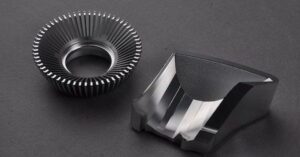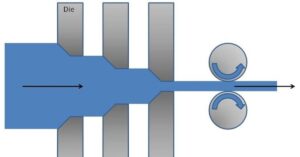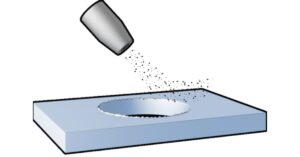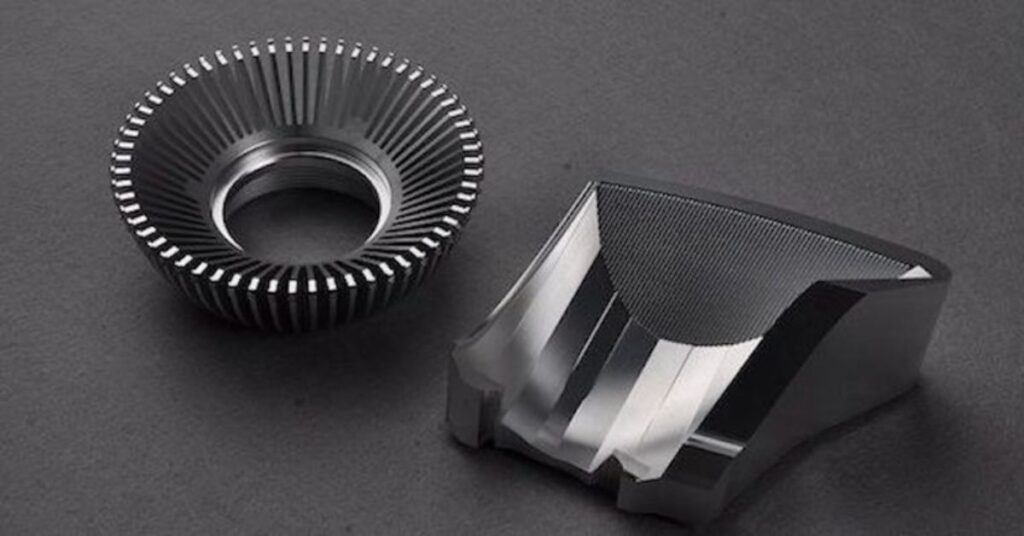The manufacturing of precision metal parts requires multiple state-of-the-art techniques to fulfill requirements regarding product dimensions surface finish and material specifications. The manufacturing domain uses two essential procedures known as wire drawing and sandblasting that advance metal component quality. Manufacturers in aerospace automotive and electronics industries use CNC metal machining in partnership with these processes to create high-precision parts.

The production sequence requires separate functions from the wire drawing and sandblasting processes. Preferential wire drawing transforms unfinished metal into detailed cable and rod forms that lead to final component production. The surface treatment known as sandblasting enhances both the finish quality as well as durability of custom machined parts. The combination of these two processes allows manufacturers to achieve strict tolerance requirements and quality standards thus becoming essential to precision metal part production.
The article explains how wire drawing processes with sandblasting techniques enable manufacturers to develop functional specialized machine parts that maintain visual quality.
Understanding the Wire Drawing Process
Wire drawing is a metalworking process that reduces the diameter of rods and wires by pulling them through a series of dies. Wire drawing performs a vital role in CNC metal machining because it produces uniform wires that exhibit better mechanical capabilities. The method starts with a steel aluminum or copper metal rod that requires cleaning followed by lubrication application for lower friction.
A process that stretches the rod enables it to pass through a conical tool having an exit opening that is narrower than the rod while maintaining high tensile forces. The stretching process extends the material which causes it to become narrower while making it grow longer. Production of desired diameter products requires multiple draws of the material through decreasing die sizes.
Wire drawing provides essential advantages for custom machined parts where starting materials require uniform grains and strengthened tensile for operating components such as fasteners, springs, and electrical conductors. The wire from the drawing process becomes an input to CNC metal systems for the production of precise geometric shapes.
Benefits of Wire Drawing for Precision Manufacturing
A metal rod or wire undergoes reduction of diameter through wire drawing which applies pulling force through multiple dies. The wire drawing method serves as a fundamental process in CNC metal machining to manufacture raw materials where it produces wires with precise diameters alongside enhanced mechanical characteristics. The procedure starts with metal rods commonly manufactured from steel aluminum or copper that receive lubricant treatment followed by cleaning.

The metal rod passes through a die that has a conical shape with a narrow exit opening and experiences high tensile stress during the process. The material transformation process results in both length growth and sectional area decline. Manufacturing complete diameters requires the rod to pass through multiple dies with reduced diameters.
Wire drawing processes starting materials into custom machined parts by creating uniform grains and improving tensile strength for components such as fasteners springs and electrical conductors. CNC metal systems take the output wire to create accurate geometries.
Exploring the Sandblasting Process
Sandblasting provides manufacturers with a surface treatment method to clean smooth or texture metallic objects. The sandblasting custom-machined parts after CNC metal machining allows manufacturers to finish the surface according to specific requirements or to prime the metal surface before coating applications. A machine using compressed air or a centrifugal wheel launches abrasive media that includes sand glass beads and aluminum oxide to strike the part surface.
Surface contaminants such as rust, scale as well and machining marks are eliminated by the abrasive media impact leading to a clean and uniform finish. CNC metal components benefit from sandblasting because it generates a satin appearance which serves to enhance their beauty together with their operational capabilities.
The surface of titanium medical implants becomes more compatible with tissue integration after sandblasting generates rough surfaces that help bones fuse better. Precision manufacturing benefits from sandblasting as this process lets manufacturers customize their applications to match the needs of custom-machined parts.
Advantages of Sandblasting in Metal Part Production
Sandblasting provides custom machined parts with various advantages above all enhancing surface quality and durability. CNC metal machining produces imperfections that sandblasting successfully eliminates through its operation process. The process delivers even surfaces that fulfill both appearance requirements as well as technical needs. Electronics housing made of sandblasted aluminum presents both attractive refinement and better defense against surface damage.

The main advantage of sandblasting includes its ability to make surfaces suitable for multiple treatment stages. The textured surface from the sandblasting operation improves the way coatings such as paint, powder coating, and anodizing adhere. It becomes essential to protect custom machined parts because they need protective finishes to operate in extreme conditions such as marine and aerospace applications. The resulting surface from sandblasting helps reduce CNC metal machining-induced stresses which decreases the probability of rupture or fatigue failure of final parts.
Integrating Wire Drawing and Sandblasting with CNC Machining
Wire drawing sandblasting along with CNC metal machining creates a synergistic effect that produces high-quality custom machined parts. Wire drawing gives the raw material enhanced precision while developing its structural strength which enables accurate machining processes. A CNC machine utilizes the specified material to cut out the requested geometry and generate exact dimensions with intricate shapes. The final sandblasting improves the surface condition to meet functional needs and visual requirements.
Manufacturers use precision steel shafts for automotive applications as their prime example. Wire drawing begins the process of creating a uniform steel rod that will have greater tensile strength. The machine cuts this rod through CNC metal turning to generate shaft features including threading and keyway elements. The sandblasting process follows machining to eliminate surface modeling issues and creates texture which boosts the durability of the shaft besides enhancing its appearance. The combination of technical methods results in precise parts that emerge as durable end products ready for their intended operational purpose.
Conclusion
Wire drawing joins forces with sandblasting to provide essential capabilities in precision metal part manufacturing which boosts CNC metal machining outcomes for custom machined parts of high quality. The raw material achieves mechanical stability through wire drawing since it produces uniform material that supports machining operations. The procedure of sandblasting improves component surfaces so they meet their intended end-use needs and any subsequent processing requirements. These production methods give manufacturers the capability to fulfill current industry standards.
Custom machined parts accomplish superior performance levels alongside superior appearance outcomes when manufacturers control wire drawing techniques and sandblasting operations. These techniques guarantee that all components achieve top-class precision and reliability regardless of whether they are lightweight aircraft parts made from aluminum or sturdy industrial equipment made from steel. CNC metal machining will benefit from technological innovation through its integration with these processes.







